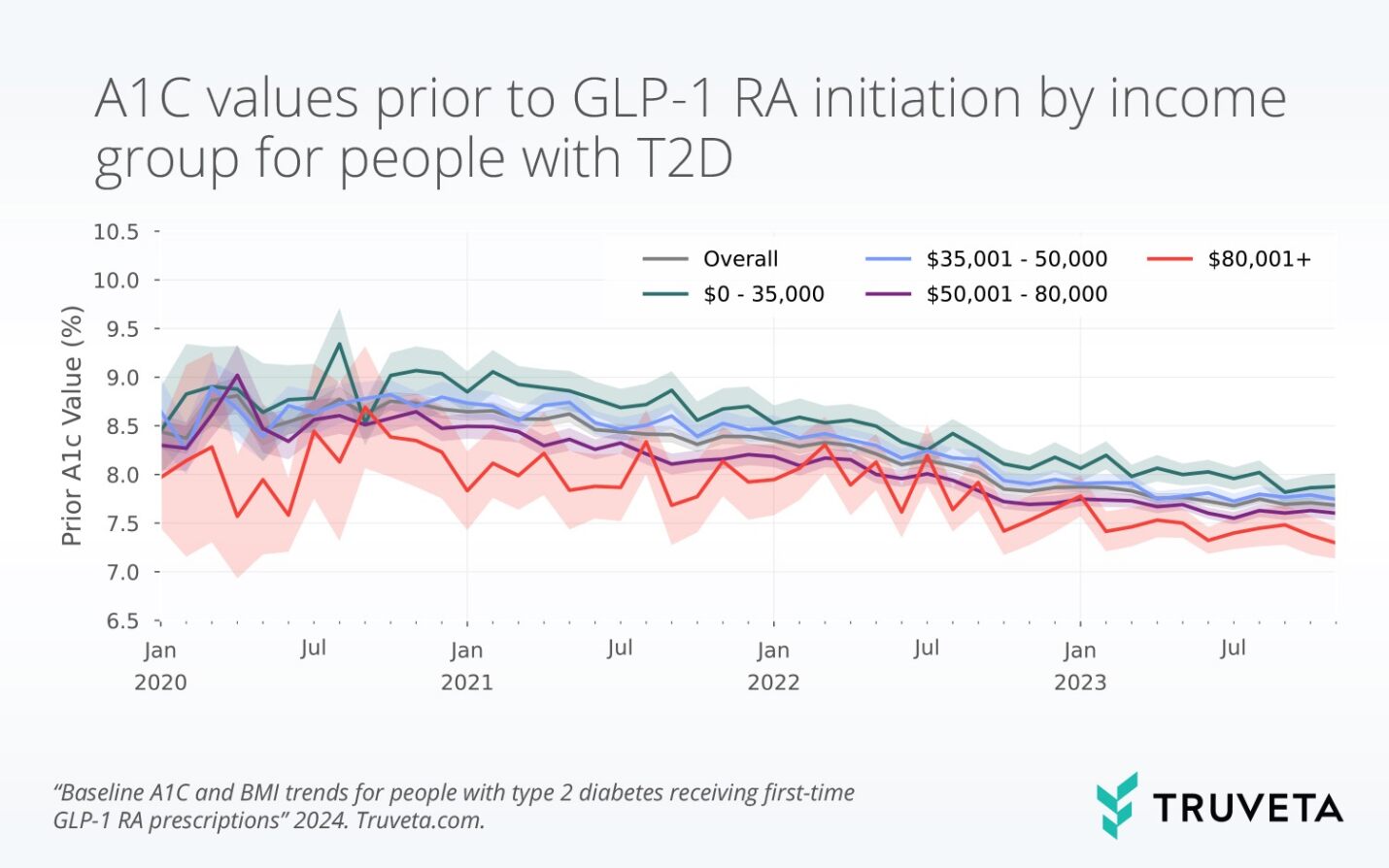Baseline A1C and BMI trends for people with type 2 diabetes receiving first-time GLP-1 RA prescriptions (ISPOR)
Sign up for a free account to read full studies, with full transparency into methods and results, and experience the power of Truveta Studio
Authors: Brianna M. Goodwin Cartwright ⊕Truveta, Inc, Bellevue, WA, Patricia J. Rodriguez, PhD MPH ⊕Truveta, Inc, Bellevue, WA, Samuel Gratzl PhD ⊕Truveta, Inc, Bellevue, WA, Charlotte Baker DrPH MPH CPH ⊕Truveta, Inc, Bellevue, WA, Christopher M. Worsham, MD MPH ⊕Department of Health Care Policy, Harvard Medical School, Boston, MA
Department of Medicine, Massachusetts General Hospital, Boston, MA
Division of Pulmonary and Critical Care Medicine, Massachusetts General Hospital, Boston, MA, Anupam B. Jena, MD PhD ⊕Department of Health Care Policy, Harvard Medical School, Boston, MA
Department of Medicine, Massachusetts General Hospital, Boston, MA
National Bureau of Economic Research, Cambridge, MA, Nicholas Stucky, MD PhD ⊕Truveta, Inc, Bellevue, WA
Date: June, 2024
Abstract
Background
Glucagon-like peptide-1 receptor agonists (GLP-1 RAs) popularity has increased, with concerns raised that use has rapidly expanded to patients with less clinical need, raising costs. We explored whether pre-treatment A1c and BMI – measures of clinical need – have fallen over time for people with type 2 diabetes (T2D) newly prescribed a GLP-1 RA.
Methods
Using a subset of electronic health record (EHR) data from Truveta from January 2020 to November 2023, we identified people with T2D, first-time T2D labelled GLP-1 RA prescriptions, a dispense of any medication, and an encounter in each of the two years prior to the prescription. People with type 1 or gestational diabetes were excluded.
A1c and BMI values were determined for individuals newly prescribed a GLP-1 RA (index event). A linear mixed effects model tested for changes in A1c and BMI over time, accounting for variation by drug. We additionally stratified models by individual income, to assess whether clinically marginal use expanded for wealthier individuals. A likelihood ratio test was used to test whether models differed with the inclusion of income.
Results
We included 144,384 people (55.5% female, 71.8% white, 82.8% not Hispanic or Latino, and mean (SD) 59.7(12.3) years of age). Baseline A1c and BMI were available for 72.8% and 66.8% of the population, respectively. The baseline mean A1c value was 8.7 (p<0.001) in January 2020, and decreased significantly over time (-0.02 per month; p <0.001, model without income). Baseline mean BMI was 37.4 (p<0.001) in January 2020, and decreased significantly over time (-0.01 per month; p <0.001). Individuals with higher incomes had lower A1c and BMIs.
Conclusions
With growing popularity of GLP-1 RAs, individuals initiating use with these treatments are doing so at lower A1c and BMI, with trends varying by income.

